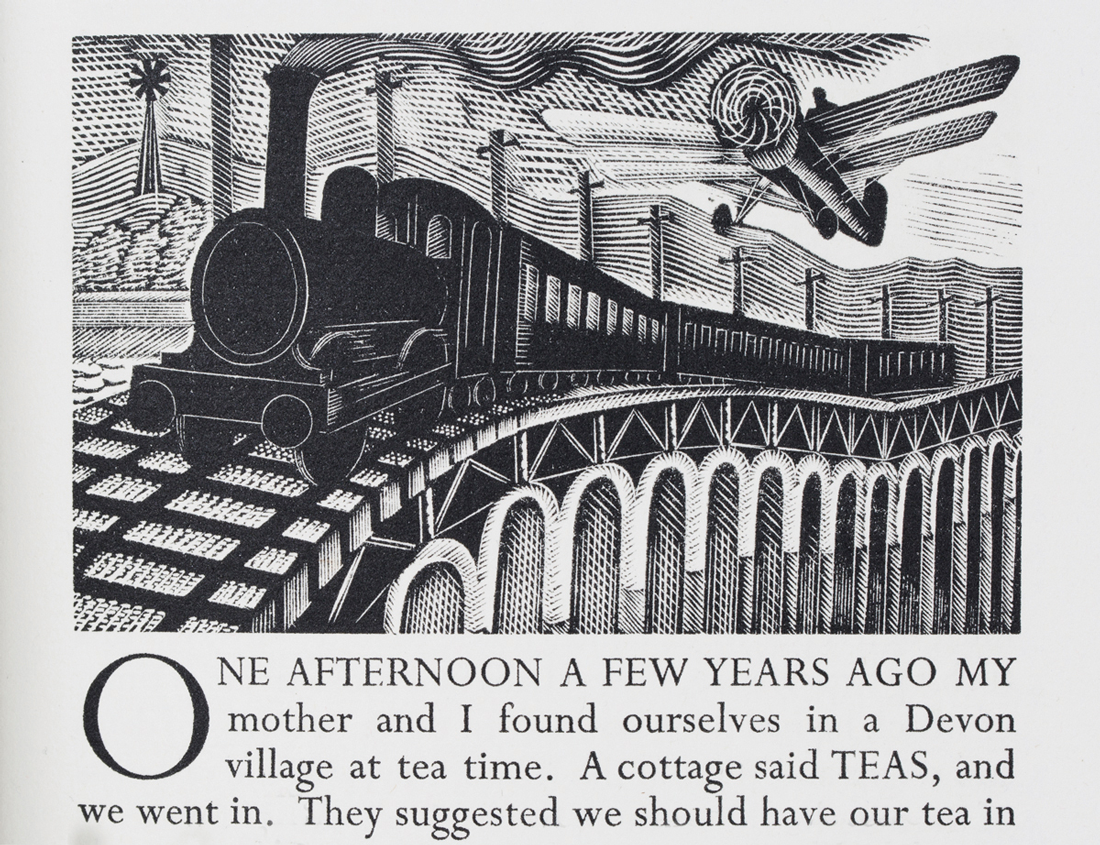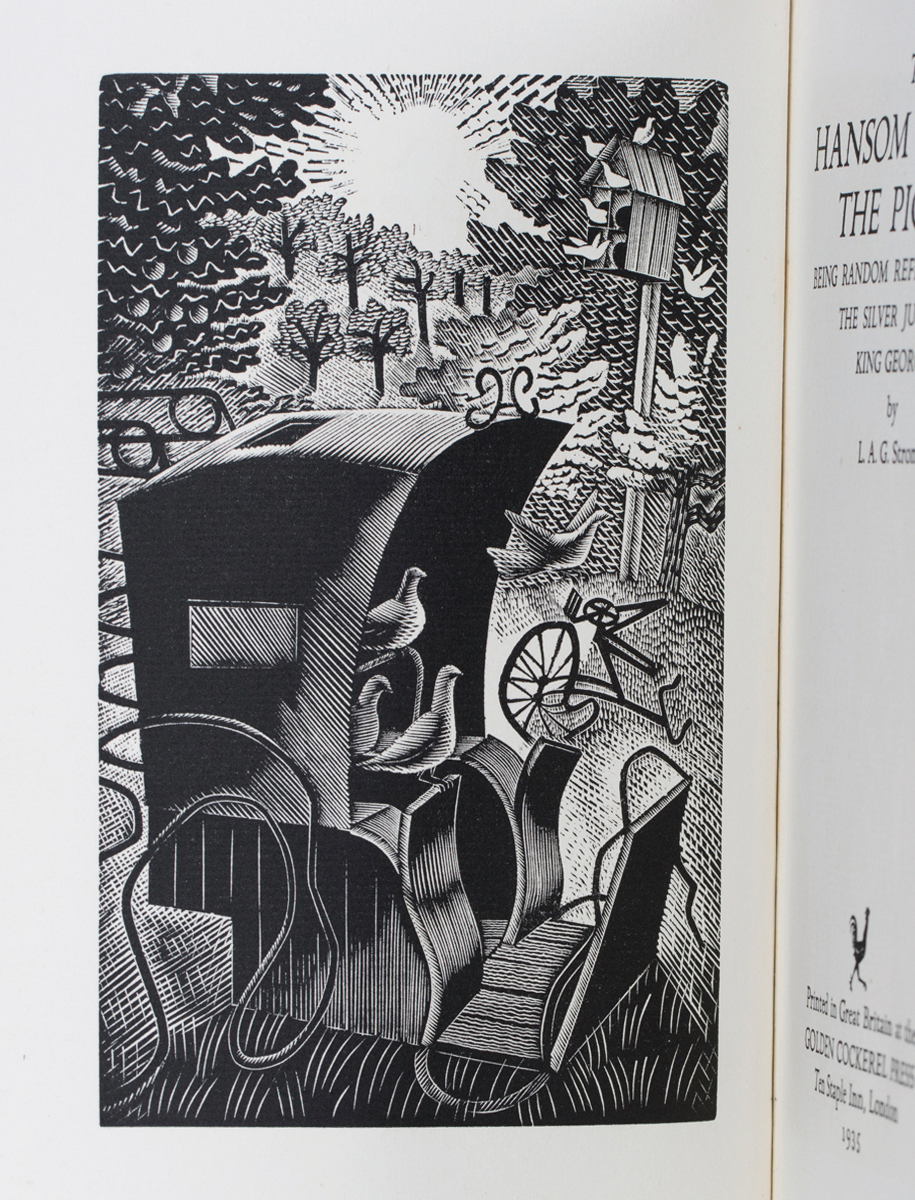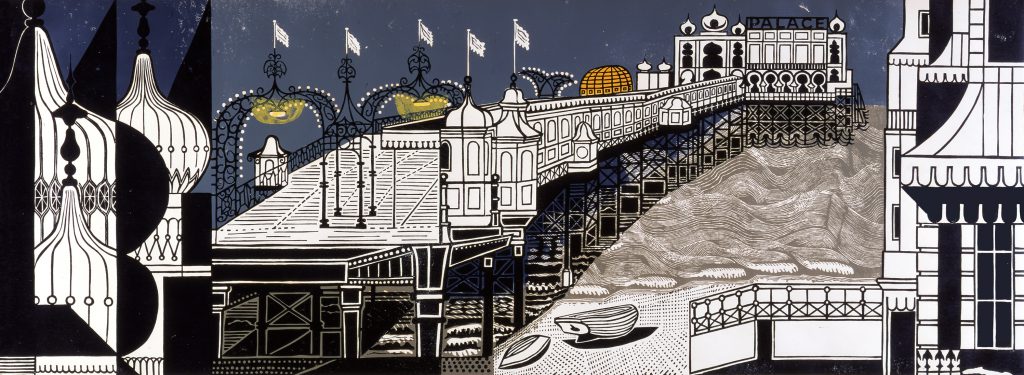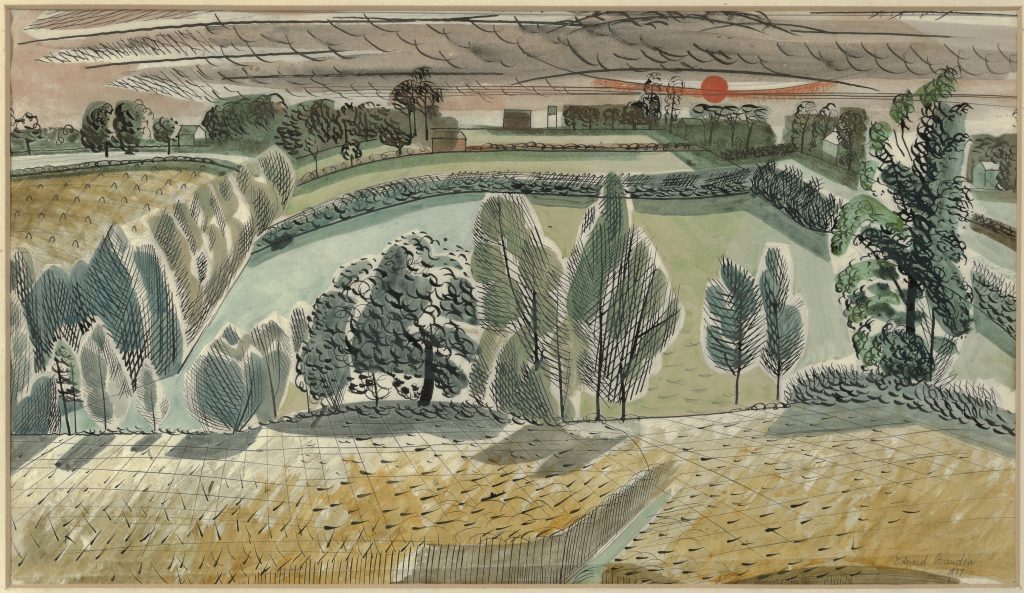‘If men and women abrogate or lose the power to think you may have material welfare but you have no life, no civilisation, no soul, nothing’

The artist Eric Ravilious worked between the wars, becoming a war artist in 1939. He grew up in Sussex and returned here in the 1930s. He was part of a generation of artists taught at the Royal College of Art in London by Paul Nash. Nash would describe this group of artists as ‘an outbreak of talent’.
Edward Bawden spoke of his life-long friend, Ravilious, as being ‘humorous, easy-going…cheerful, good-natured and intelligent’, qualities which were reflected in his work.
Ravilious’ skill in carving his woodblocks was exceptional. He would first draw the image onto the block lending the images spontaneity, light and life.
The use of punches created rich textures through scratches, flecks and dots. Even in black and white their tonal variation suggests colour. The effect is to give an impression of the artist’s sheer delight in the cutting of the woodblock to create these images.
The Silver Jubilee of George V in 1935 was the first national celebration of its kind since Queen Victoria’s Diamond Jubilee in 1897. It was seen as a period of stability and change which included the emancipation of women and, despite the shadow of the First World War and Great Depression, a time of continuity and hope.
The new owners of the Golden Cockerel Press, Christopher Sandford and Owen Rutter, marked the Jubilee by publishing a brief text by LAG Strong titled ‘The Hansom Cab and the Pigeons’. Strong was a popular writer of thrillers but here the author reflects on the passing of time and the threat posed by the rise of the Nazis: ‘If men and women abrogate or lose the power to think you may have material welfare but you have no life, no civilisation, no soul, nothing…’.
The book was illustrated by the artist Eric Ravilious. At first glance Ravilious’ watercolours and woodblock illustrations seem to depict an unchanging rural England.

His frontispiece for the book at first appears to give a literal expression to the books title. Pigeons roost without a care under the hood of a Hansom Cab abandoned in the gardens of a Devon tea room, but as the sun rises they are unheeding of the new dawn which will propel the world to war once again. The image is demanding, questioning.
The image that marks the start of the book is amongst my favourites in Ravilious’ oeuvre. Here the past meets the future. Against the backdrop of an unchanging English landscape a train speeds towards us at full-steam, the undulations in the landscape and bridge lend it speed, mirrored by the mono-plane as it soars skywards.
The Golden Cockerel Press was part of the Private Press movement which gave a freedom of expression to authors and artists.
It seems to me that to remain questioning, open hearted and open minded about all things is essential to a good human life as it prevents us from becoming fundamental about anything. Collectors know this intuitively. They often begin collecting in the pursuit of knowledge and of course once we have learnt something our instinct is to share what we have learnt with others. It is my experience that lively minds make open and generous hearts.
Demand from collectors remains strong as the Covid-19 lockdown eases and with book and print sales scheduled as part of Toovey’s Summer of Sales there is much to look forward to. Do phone for a pre-sale valuation or check out the online catalogues at tooveys.com.

